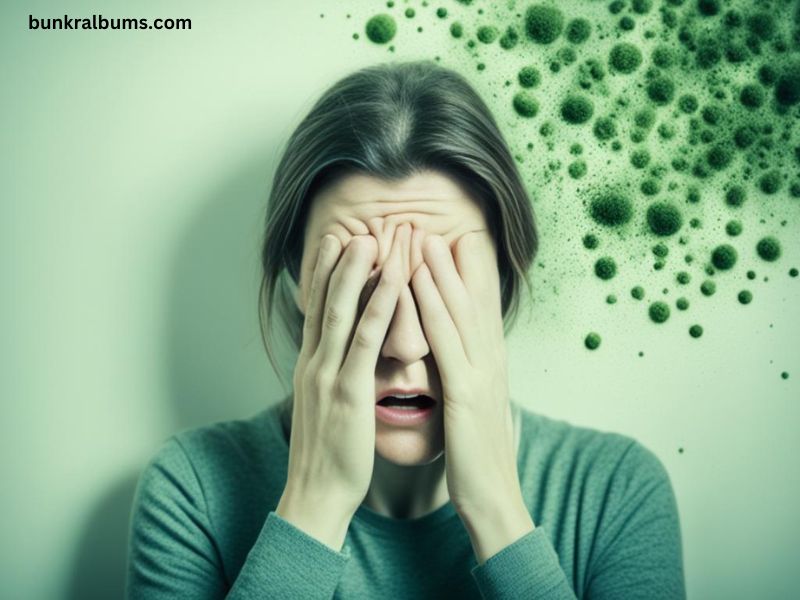Mold is a common problem in many homes, particularly in areas with high humidity or water damage. While mold is a natural part of our environment, certain types can become toxic and pose serious health risks. Mold toxicity can affect anyone, but certain individuals, such as those with compromised immune systems, asthma, or allergies, may be more susceptible. Recognizing the warning signs of mold toxicity is crucial for maintaining your health and safety. In this article, we’ll explore the top 10 warning signs of mold toxicity and what you can do about it.
Understanding Mold Toxicity
Mold toxicity occurs when individuals are exposed to mold spores and mycotoxins produced by certain mold species. These toxins can lead to a range of health issues, from mild allergies to severe respiratory problems. Common molds associated with toxicity include Stachybotrys chartarum (black mold), Aspergillus, and Penicillium.
The Importance of Awareness
Being aware of mold toxicity signs can help you take timely action. The sooner you identify a problem, the quicker you can remediate it, preventing further health complications.
1. Respiratory Issues
One of the most common signs of mold toxicity is respiratory problems. Symptoms may include:
- Coughing: Persistent cough that doesn’t seem to go away.
- Wheezing: A whistling or squeaky sound when breathing.
- Shortness of Breath: Difficulty catching your breath during routine activities.
These symptoms can be particularly pronounced in individuals with pre-existing conditions such as asthma or chronic obstructive pulmonary disease (COPD).
Why This Happens
Mold spores can irritate the respiratory tract, causing inflammation and exacerbating pre-existing conditions. The presence of mycotoxins can further aggravate these symptoms.
2. Allergic Reactions
If you notice an increase in allergy symptoms, it may be a sign of mold exposure. Symptoms can include:
- Sneezing: Frequent sneezing fits, particularly when in certain environments.
- Itchy or Watery Eyes: Irritation in the eyes can be a direct reaction to mold spores.
- Skin Rashes: Contact with mold can cause skin irritation and rashes.
Understanding Allergies and Mold
Mold spores act as allergens, triggering the immune system’s response. For those with mold allergies, even small amounts can lead to significant symptoms.
3. Fatigue and Weakness
Unexplained fatigue can be a warning sign of mold toxicity. People exposed to mold may experience:
- Chronic Fatigue: Persistent tiredness that doesn’t improve with rest.
- Weakness: A general sense of physical weakness or lethargy.
The Connection
Mold exposure can lead to systemic inflammation, which in turn can result in fatigue. The body’s energy is diverted to combat the perceived threat, leaving you feeling drained.
4. Cognitive Impairment
Mold toxicity can also impact your mental health. Common signs include:
- Memory Loss: Difficulty recalling information or recent events.
- Confusion: A feeling of disorientation or difficulty concentrating.
- Mood Changes: Increased anxiety or depression.
Why Mental Effects Occur
Certain mycotoxins can affect the brain and nervous system, leading to cognitive decline and emotional disturbances.
5. Headaches
Frequent headaches can be another indicator of mold toxicity. Symptoms may vary in intensity and frequency, including:
- Migraines: Severe, throbbing headaches that can last for hours or days.
- Tension Headaches: General discomfort or pressure in the head.
Mechanism of Action
Mold spores can trigger inflammation and affect blood flow, leading to headaches.
6. Digestive Problems
Gastrointestinal symptoms can also arise from mold exposure. Watch for signs such as:
- Nausea: An ongoing feeling of sickness or queasiness.
- Diarrhea: Frequent loose or watery stools.
- Bloating and Gas: Discomfort in the abdomen accompanied by gas.
Connection to Mold
Certain molds can produce mycotoxins that disrupt gut health, leading to digestive disturbances.
7. Sinus Congestion and Infections
Persistent sinus issues can indicate mold toxicity. Symptoms may include:
- Congestion: A feeling of pressure or fullness in the sinuses.
- Sinus Infections: Recurrent sinus infections that don’t respond to treatment.
Why This Occurs
Mold spores can irritate the nasal passages, leading to chronic inflammation and making you more susceptible to infections.
8. Eye Irritation
If you experience persistent eye irritation, it may be linked to mold exposure. Common symptoms include:
- Redness: Bloodshot eyes due to irritation.
- Sensitivity to Light: Discomfort when exposed to bright lights.
- Swelling: Puffiness around the eyes.
Understanding Eye Irritation
Mold spores can directly irritate the eyes, leading to allergic reactions and inflammation.
9. Unexplained Fever
A low-grade fever that persists without an obvious cause can be a warning sign. Accompanying symptoms may include:
- Chills: A sensation of coldness or shivering.
- Sweating: Unexplained perspiration, particularly at night.
Why Fever May Occur
Fever can be a response to an infection or inflammation caused by mold exposure, especially if the body is fighting off an allergic reaction.
10. Structural Signs in the Home
Sometimes, the signs of mold toxicity extend beyond personal health. Structural issues in your home can indicate a mold problem, including:
- Visible Mold Growth: Dark spots or fuzzy patches on walls, ceilings, or floors.
- Musty Odors: A persistent, unpleasant smell that suggests mold presence.
- Water Damage: Stains or discoloration on surfaces can indicate moisture issues.
Addressing Structural Concerns
If you notice any of these signs in your home, it’s vital to address the underlying moisture issue. Mold thrives in damp conditions, and remediation is essential for your health.
What to Do if You Suspect Mold Toxicity
If you recognize any of these warning signs, consider taking the following steps:
- Consult a Healthcare Professional: If you experience symptoms, seek medical advice for proper diagnosis and treatment.
- Conduct a Home Inspection: Look for visible mold growth and areas of water damage.
- Consider Professional Mold Remediation: Hiring a professional can ensure safe and effective mold removal.
- Improve Ventilation: Ensure your home is well-ventilated to reduce humidity levels.
- Use Dehumidifiers: This can help maintain optimal moisture levels, particularly in damp areas.
- Regular Cleaning: Keep your home clean and dry to prevent mold growth.
Conclusion
Mold toxicity is a serious health concern that can manifest through various warning signs. Recognizing these signs early is essential for protecting your health and ensuring a safe living environment. If you suspect mold toxicity, take immediate action to address the issue. By staying informed and proactive, you can significantly reduce your risk of mold-related health problems and create a safer space for you and your family.







